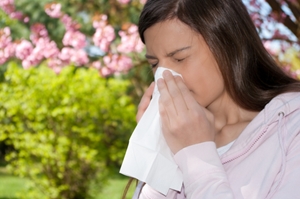
Pollen-induced allergy sufferers beware, the season is starting and doesn't show signs of stopping anytime soon.
According to The Washington Post, a spike in pollen levels will occur within these coming weeks. Peak pollen levels usually occur between the middle and end of April.
Some of the heavy tree pollen carriers include:
- Ash
- Birch
- Cedar
- Cypress
- Juniper
- Mulberry
- Oak
- Pine
- Sycamore
The pollen count is usually highest on sunny, slightly windy days. Cold and rainy weather usually keeps pollen to a minimum.
According to the U.S. Army Centralized Allergen Extract Lab in Silver Spring, the maximum pollen levels have ranged between 2,000 and 4,000 grains per cubic meter between April and May.
If you suffer from pollen-induced symptoms, read though the following three facts to better understand some of pollen's effects this season.
- Pollen can travel further than you think: Some pollens have been recorded as traveling thousands of miles from their native origin. More often than not though, you are most likely to be affected by the pollen down the street from you.
- Some pollens can irritate more than others: Some pollens can be considered more irritating than others, but it all depends on how your body reacts to them. This can also depend on what you live near and how exposed you are to it on a daily basis.
- Wind only makes it worse: Windy days can aggravate your symptoms even more, especially if the wind is fast and unrelenting. The direction of the wind can also have an impact, which is why you may want to avoid the outdoors in extreme wind and weather.
Minimize contact with pollen by wearing a mask when performing outdoor activities, knowing the pollen count before you leave your house and drying clothes indoors rather than outside.
Visit our website for more tips and information.









